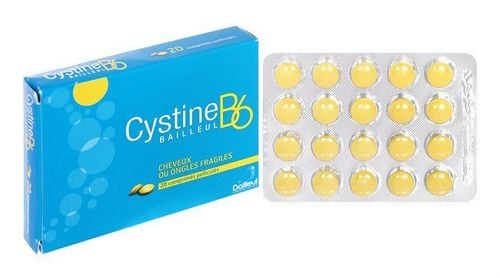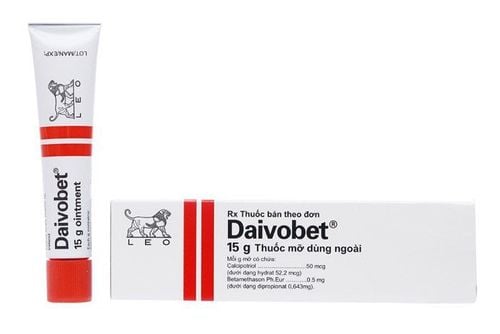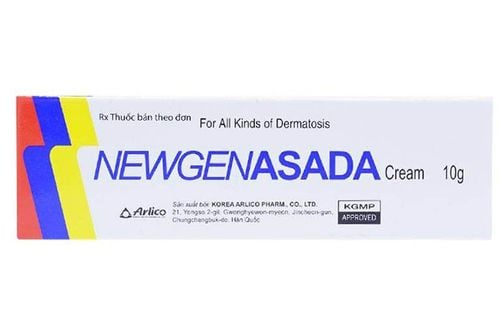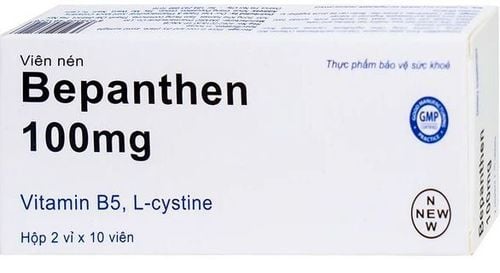This is an automatically translated article.
Corticosteroids are a large group of drugs with many different active ingredients and routes of use. Among them, there are active ingredients used topically such as Triamcinolone Acetonide, found in Amcinol Paste products.
1. What is Amcinol Paste?
Amcinol Paste with the main ingredient is Triamcinolone acetonide 0.005g and some excipients such as Sodium carboxymethylcellulose, Propylene glycol, Sodium benzoate, Potassium sorbate, menthol, brilliant blue, quinoline color, citric acid monohydrate, diethylene glycol monoethyl ether and purified water.
Triamcinolone Acetonide in Amcinol Paste is a corticosteroid for topical use (including intraoral and topical). The mechanism of action of topical Triamcinolone Acetonide remains unclear.
2. Indications of Amcinol Paste
Dermatitis or eczema, including cases of progressive palmar keratosis, facial pigmentation in women or dermatitis caused by sunlight or radiation; Itchy skin; Urticaria, including urticaria, blistering or persistent urticaria; Amcinol Paste treats insect bites; Psoriasis; Pustules of the palms, soles of the feet; Erythema, including exudative erythema multiforme, erythema nodosum, diffuse annular erythema; Generalized erythema, including erythema due to malignant lymphoma; Mucocutaneous syndrome (including Behcet's disease); Skin rash due to intoxication; Clustered alopecia (including malignant causes); Burn; Amcinol Paste is also used to treat acne, pemphigus, dermatitis herpetiformis, lichen planus or erythema around the pores. On the other hand, the following cases are not allowed to prescribe:
Amcinol Paste should not be used to treat tuberculosis of the skin, fungal infections and viral infections (such as Herpes simplex, chickenpox and smallpox); Do not use Amcinol Paste for people who are sensitive to Triamcinolone Acetonide or any of the excipients in the drug; Contraindications to applying Amcinol Paste directly to the eyes; Topical corticosteroids such as Amcinol Paste should not be used in patients with circulatory failure because of the risk of skin ulcers; Topical corticosteroids should be used with caution and absolutely should not be covered in cases of skin infections.
3. Instructions for using Amcinol Paste
Patients correctly indicated to use Amcinol Paste each time, apply a small dot (about 0.5cm) on the damaged skin before going to bed. However, depending on the severity of symptoms, the patient can apply Amcinol Paste 2-3 times a day.
Precautions for overdose Amcinol Paste :
Triamcinolone or other corticosteroids, after topical application, can be absorbed in sufficient quantities to cause systemic effects, such as suppression of the hypothalamic-pituitary axis- adrenal gland, Cushing's syndrome, hyperglycemia or urinary tract; In case of overdose and confirmed hypothalamic-pituitary-adrenal axis suppression, Amcinol Paste should be discontinued immediately, then the frequency of application should be adjusted or replaced with another drug. weaker steroids; Patients should be actively monitored for symptoms when overdosing Amcinol Paste to take timely measures.
4. Amcinol Paste side effects
Intolerance to Amcinol Paste is very rare with itching and/or irritation at the application site. Failure to load Amcinol Paste topical may be due to the body's reaction to other ingredients in the drug.
Undesirable skin reactions when using Amcinol Paste may include erosion of the epithelium, subcutaneous tissue and collagen, dry, cracked or tight skin, possible thinning of the skin epithelium, dilation of capillaries and vessels. fragile blood under the skin leading to purpura...
Other skin side effects of Amcinol Paste may include:
Outbreaks of acne or blisters; Skin irritation, itching; Werewolf disease; Outbreaks of rosacea, erythema, hyperesthesia; Dermatitis around the mouth; A burning or burning sensation; Folliculitis ; Reduce pigmentation.
5. Some Precautions When Using Amcinol Paste
Amcinol Paste products are formulated for external use only and avoid direct contact with eyes.
If skin irritation occurs, the patient should not continue using Amcinol Paste but should seek a more suitable alternative treatment.
Using Amcinol Paste at a higher dose and for a longer time than recommended still has the risk of causing immunosuppression, reducing resistance to the agent and masking the symptoms of infection. If a skin infection occurs, the patient should be prescribed an appropriate antibiotic and antifungal medication, and the lesion should not be bandaged. In case of skin infections that do not respond to treatment, consideration may be given to discontinuing Amcinol Paste until the infection is under control.
When applying Amcinol Paste to the skin for a long time, it will increase the absorption of the drug throughout the body, especially if accompanied by a bandage. This can increase the risk of side effects, especially as mentioned above, stretch marks and skin erosion or acne flare-ups.
Because of the systemic absorption of Amcinol Paste, patients should be periodically evaluated for inhibition of the hypothalamic-pituitary-adrenal (HPA axis) with appropriate testing. If HPA axis suppression is confirmed, the frequency of application should be adjusted or consideration should be given to discontinuing Amcinol Paste.
Children are subjects with a larger skin surface area to volume ratio than adults, so there is a high risk of unwanted effects when applying Amcinol Paste.
Any corticosteroid therapy (including Amcinol Paste) has a tendency to increase blood glucose levels in diabetic patients, so this should be monitored during treatment. Topical corticosteroids such as Amcinol Paste should be used with caution in patients with psoriasis under control, with particular in mind that exacerbs or systemic pustular psoriasis may develop during or after discontinuation of therapy. with Amcinol Paste .
Amcinol Paste should be used with caution in patients with impaired T-cell function or on immunosuppressive therapy. This condition can trigger an underlying infection or trigger an exacerbation.
Patients on long-term treatment with Amcinol Paste and at risk of immunosuppression should not receive any live vaccines.
Patients should note that corticosteroid therapy, although it relieves dermatological diseases, does not prevent recurrence.
6. Amcinol Paste drug interactions
Possible drug interactions with Triamcinolone Acetonide in Amcinol Paste are similar to those of other corticosteroid active ingredients. Although there are many potential drug interactions, most do not occur with topical corticosteroids but only when taken in excess or for longer than recommended.
Carbamazepine, Phenytoin and Rifampicin induce enzymes in the liver, thus may increase the metabolism of Triamcinolone Acetonide; Simultaneous use of Amcinol Paste with diuretics reduces blood potassium levels; All corticosteroids (including topical triamcinolone) antagonize the effects of neuromuscular blocking agents (such as Vecuronium); Oral contraceptives may prolong the half-life of Amcinol Paste, thereby increasing the anti-inflammatory effect.
Please dial HOTLINE for more information or register for an appointment HERE. Download MyVinmec app to make appointments faster and to manage your bookings easily.













